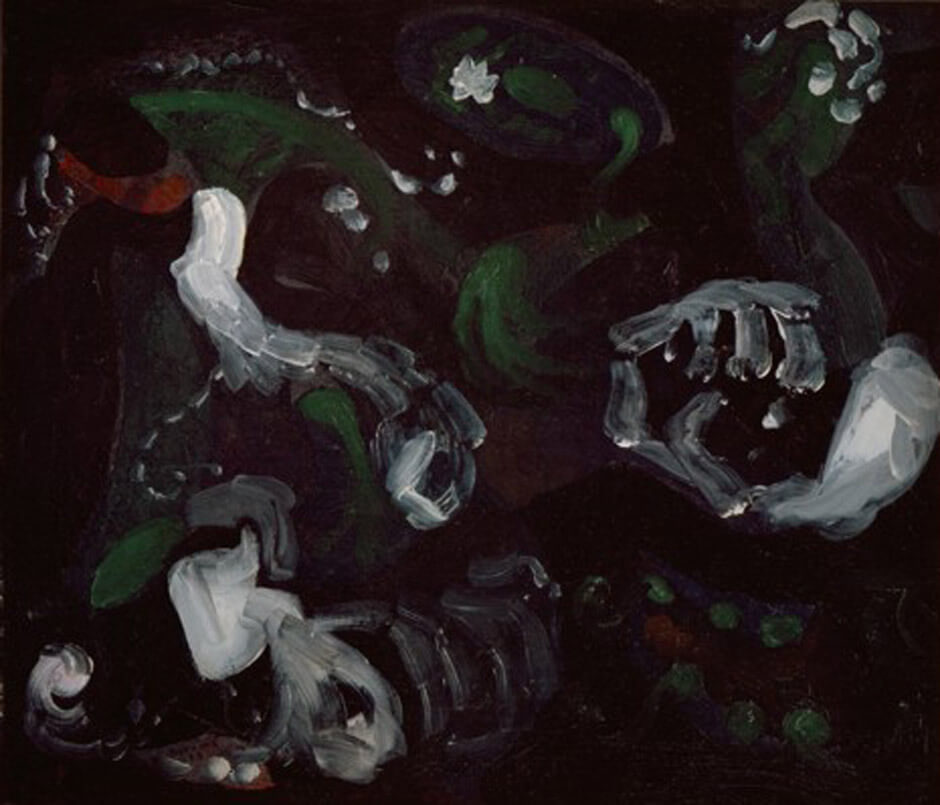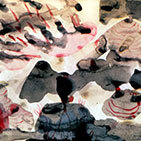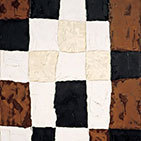Rape at the Limits of Matter 1943

Paul-Émile Borduas, Rape at the Limits of Matter (Viol aux confins de la matière), 1943
Oil on canvas, 40.4 x 46.5 cm
Musée d’art contemporain de Montréal
In Rape at the Limits of Matter, Borduas moves in a new direction, using oil paint. In his works in gouache, such as Study for Torso or No. 14, 1942, Borduas had achieved a sense of spontaneity afforded by the medium. Could that spontaneity be transferred to oil painting? Would he be able to preserve the same tempo of improvisation? The same vivacity of colour and clean definition of planes? For the artist, problems arise primarily from differences in technique between oil painting and gouache. Compared to water, oil dries more slowly, and its surface tension is lower, meaning that it tends not to stay within the boundaries where it is applied. As such there is a risk that the lines will blur slightly. Simply transposing the gouaches into oil paintings quickly revealed itself to be difficult.

After some preliminary attempts, such as The Phantom Boat (Le bateau fantasque), 1942, Borduas adopted a new approach. For the opposition of line and colour, which defined the gouaches, he substituted an opposition of ground—first applied by brush—and objects suspended in space painted onto this ground. Rape at the Limits of Matter, as the title suggests, can be seen as a whirl of galaxies against the background of a cosmic night. Borduas maintained this new approach throughout his true Automatiste period. The background colour becomes gradually more refined, at times suggestive of the ocean floor, or of morning or dusk.
The objects, initially painted with a brush, are applied with a palette knife. It could be said that Borduas, having exhausted the formula of still-life composition and portraiture in his gouaches, adopted the landscape formula in his oils between 1943 and 1949. This relationship to landscape is sometimes made explicit in the titles he gives to the finished canvases, such as The Winged Courier of the Cliff (Le facteur ailé de la falaise), 1947; Leeward of the Island or 1.47 (Sous le vent de l’île ou 1.47), 1947; and Rock Drowned in Wine (Rocher noyé dans le vin), 1949.

 About the Author
About the Author
 More Online Art Books
More Online Art Books
 Acknowledgements
Acknowledgements